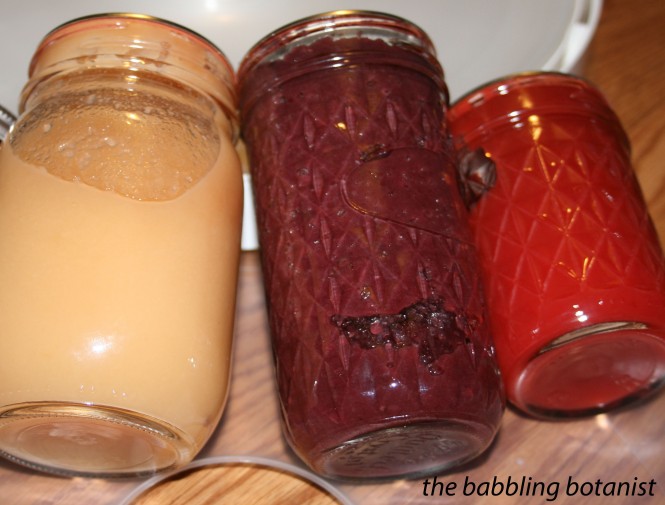This time of year, when canning season is just beginning, is a great time to inventory what you have left in your pantry from last season. In my inventory one thing I noticed that I still had a lot of was applesauce. I haven’t been cooking with it as much as I thought I would, and I just don’t eat it plain often either. I also had a couple flavoured applesauces that friends gave me, including a blackberry one and a cinnamon one (made with cinnamon candy I think).
So, I decided to repurpose it as fruit leather. I really enjoyed snacking on strawberry fruit leather last summer in the field, so thought I’d free up some spaces in the pantry and dry a few jars of applesauce.
I spread the applesauce out on my fruit leather trays and dried it at 135 F in my dehydrator. 12 oz was about perfect for one tray; I needed to mix a little extra into the 8 oz jar to cover the whole tray.
Here’s the plain applesauce.
Cinnamon applesauce.
Blackberry applesauce.
I love making this just before I go to bed, because it takes at least 8 hours with a full dehydrator. It’s nice to just wake up and it’s almost done! After 8 – 10 hours you have fruit leather! The publication says 4-8 hours, but I’m thinking 4 must be with one tray, using their precooked method. You know it’s done when there are no wet spots and peels off but still it’s still slightly tacky. Maybe try it during the day for the first time, but I’ve got the timing down well in my dehydrator and can wake up and it’s done 🙂
After it is dry, peel it off the trays. If you are having trouble getting it started, I find slipping a butter knife under works well.
Roll it up and store! You can store a whole sheet, or cut it into smaller pieces. You can roll it up with plastic wrap so it doesn’t stick to itself, but I don’t really like using all that plastic wrap so I usually just deal with a few stuck together pieces.
So beautiful! For more ideas check out the OSU extension publication linked to below.
*this post contains affiliate links, please see the “About the Blogger” page for more information
Used for this project:
Nesco dehydrator
Extra trays
Applesauce
Fruit leather publication



















